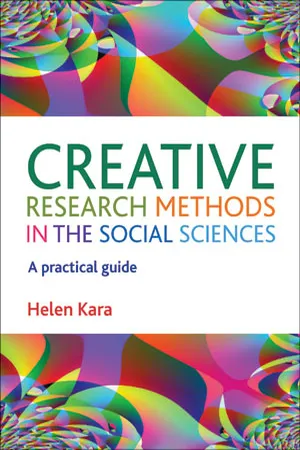
- 224 pages
- English
- ePUB (mobile friendly)
- Available on iOS & Android
About this book
With foreword by Kenneth J. Gergen and Mary M. Gergen.
Creative research methods can help to answer complex contemporary questions, which are hard to answer using traditional methods alone. Creative methods can also be more ethical, helping researchers to address social injustice.
This accessible book is the first to identify and examine the four areas of creative research methods: arts-based research, research using technology, mixed-method research and transformative research frameworks. Written in a practical and jargon-free style, with over 100 boxed examples, it offers numerous examples of creative methods in practice, from the social sciences, arts, and humanities around the world. Spanning the gulf between academia and practice, this useful book will inform and inspire researchers by showing readers why, when, and how to use creative methods in their research.
Frequently asked questions
- Essential is ideal for learners and professionals who enjoy exploring a wide range of subjects. Access the Essential Library with 800,000+ trusted titles and best-sellers across business, personal growth, and the humanities. Includes unlimited reading time and Standard Read Aloud voice.
- Complete: Perfect for advanced learners and researchers needing full, unrestricted access. Unlock 1.4M+ books across hundreds of subjects, including academic and specialized titles. The Complete Plan also includes advanced features like Premium Read Aloud and Research Assistant.
Please note we cannot support devices running on iOS 13 and Android 7 or earlier. Learn more about using the app.
Information
Table of contents
- Cover
- Title
- Copyright
- Contents
- List of figures and tables
- Debts of gratitude
- Foreword
- Dedication
- How this book can help
- one Introducing creative research
- two Creative research methods in practice
- three Creative research methods and ethics
- four Creative thinking
- five Gathering data
- six Analysing data
- seven Writing for research
- eight Presentation
- nine Dissemination, implementation and knowledge exchange
- ten Conclusion
- References